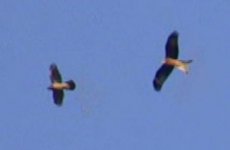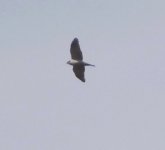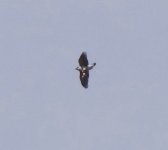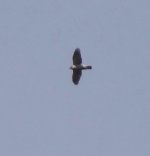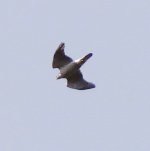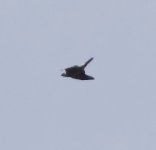A little conceited, even for you Ken!
What a load of twaddle! Is that why 99% of the Goshawks that you claim, supported by your images, are misidentified Sparrowhawks then?
In this instance, there isn't even an image and you are claiming to be able to identify it!
I've seen Sparrowhawk, various corvids, Hen Harrier etc misidentified as Gos in the past, just because the observer wanted- and sometimes expected to see Gos!
To the OP, err on the side of caution; put it down to experience as 'one that got away', its all that you can realistically do with it.
RB
1st statement- You should not confuse conceit...with the blinding obvious, particularly when you have a clear and uninterrupted view of the subject...and especially if it's a large female. Agreed...fleeting views of males surfing tree-tops,
now you see it - now you don't can be problematic. (I've had more of those, than you've had hot dinners sunshine). Principally because of the narrow climax woodland corridor that runs behind my abode, and acts as a conduit for species that need to keep a low profile e.g. Hawfinch, Mandarin Duck and Goshawk.
2nd statement- Don't know where you're getting your percentages from, as any images that I've put up where I've either asked the question (mostly) rather than state categorically (not often), are in the public domain.
3rd statement- My response was based on the OP's description of events and his own 90% surety regarding the ID, however his real concern was the ''likelihood'' of raptors enjoying a ''social'' soaring session.
4th statement- I have to assume that the ''generalisation'' that you allude to is just that, and not your own personal difficulties that you may, or may not have, in separating one rap from another?
5th statement- I do believe the OP states that he is not after a 100% confirmation, and is not going to be putting in a formal submission.
Clearly Rother....you appear to have a problem with the salient points on Gos., here are a few images, generally big and bulky!....not unlike the typefaces you elect to use in your communications.
PS. If there are any questions that you feel that you'd like to ask regarding Goshawk Rother....just ask. :t:






